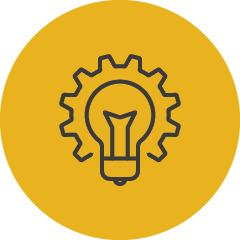
Opinions expressed in AGB blogs are those of the authors and not necessarily those of the institutions that employ them or of AGB.
Finding ways to improve student success is a hot topic these days. A quick internet search reveals more than 500,000 books, articles, reports, programs, and third-party products discussing how colleges and universities can improve student success at their institutions. Most of these discussions take the form of actions individual institutions can take, examples of best practices that have worked at other institutions, or studies of how far our country still needs to go to improve equitable student success.
What is less present in these discussions is the important role of partnerships in building programs and services, providing resources, and engaging in ongoing continuous improvement that is at the core of improving student success.
At the December meeting of AGB’s Council for Student Success (CfSS) we discussed different opportunities for colleges and universities to collaborate with other institutions, organizations, states, and the federal government to augment their own efforts and better address the complex challenges that are at the heart of getting all students across the finish line.
Spurred by a recent opportunity to hear from U.S. Assistant Secretary for Postsecondary Education Nasser Paydar, PhD, CfSS members discussed how institutions and their governing boards could better align with and leverage federal and state policies and resources and form strategic partnerships to impact student success. Let me shed light on a few themes that emerged from the conversation.
It Takes Two to Transfer
Transferring from one postsecondary institution to another is an important completion pathway for many students. According to data released by the National Center for Education Statistics in fall 2021, nearly 1.3 million full-time undergraduate students were enrolled as transfer-in students.
And yet transfer remains one of the most difficult challenges to increasing college completion and reducing cost. A 2017 report by the U.S. Government General Accounting Office found that students lost an estimated 13 credits, on average, when transferring from one institution to another. That is equivalent to about four courses or almost one semester of full-time enrollment.
Transfer is especially important to students of color and lower-income students, as these populations are disproportionately more likely to begin their college experience at a community college with the intent to transfer to complete their four-year degree. But these same populations are struggling to make the leap from community college to baccalaureate degree completion. The National Student Clearinghouse Research Center reported that in 2022 lower-income students were nearly half as likely than their higher-income peers to have transferred to a four-year institution (25 percent versus 41 percent) and to have attained a bachelor’s degree within six years of first entry (11 percent versus 22 percent).
If we are serious about meeting goals of expanding the number of individuals with college degrees and close any equity gaps, getting transfer right must be a board priority. But an important reason that transfer is so challenging is that it takes (at least) two institutions to make it work. One institution, no matter how transfer-friendly, cannot eliminate all of the hurdles to a seamless transfer, which range from credit equivalencies, to academic support services, to student aid policies, to addressing the “transfer shock” that impacts many students. Improving student success for transfer students will require the sending and receiving institutions to partner more closely to minimize hurdles along the way. Such efforts as the University of Central Florida’s UCF Connect are a model for how institutions can work together to support transfer success.
To better understand how to improve outcomes for transfer students, boards should be asking:
- Who are our most important transfer partner institutions as seen by student behavior? (National Student Clearinghouse Data can provide a clear picture of where students are coming from and going to when they transfer, and a clearer picture of who your transfer partners need to be.)
- Where are the opportunities to expand collaborations with those institutions, especially in building clear transfer pathways that minimize credit loss, early onboarding and transition programs that minimize transfer shock, and collaborative financial aid packages and transfer scholarships that ensure transfer students have enough financial support to get them over the finish line?
It Takes a Village
Moving the dial on student success is complex. Any one student’s ability to successfully complete college is influenced by myriad factors, both academic and nonacademic. Addressing many of these factors, such as academic support and advising, early career counseling, building a sense of belonging, need-based financial aid programs, and new approaches to curriculum and program delivery, are well within the expertise and resources of the campus community.
But there is a growing understanding that there are factors that are impacting a student’s ability to complete college that are beyond the expertise and/or resource base of many of our institutions. Such issues as mental health, homelessness, and food insecurity are critical areas of student need.
According to the American Psychological Association, student mental health issues are worsening. The association cites research that indicates that during the 2020-21 school year, nearly 60 percent of college students met the criteria for at least one mental health problem and almost three quarters of students reported moderate or severe psychological distress. Studies also estimate that between 35 percent and 45 percent of U.S. college students experience food insecurity at some point in their college career and as much as 15 percent experience homelessness. An even greater challenge is that some students are experiencing more than one of these factors simultaneously. Addressing these issues will be critical to advancing student success, but many institutions are struggling to find the resources, capacity, and expertise to respond.
But colleges and universities do not need to address these issues alone. Community organizations, nonprofits, and state and federal governments are available to partner with institution-based programs to bring critical resources to higher education’s most at-risk populations. The Minnesota Office of Higher Education’s Student Homelessness in Higher Education Resources site for example, is one model of a coordinated effort to bring resources together and make them easily available to institutions and students.
To better understand how to improve outcomes for the most at-risk students, boards should be asking:
- What percentage of our own students are facing such nonacademic issues as mental health concerns, homelessness, and food insecurity? What programs do we have in place to address their needs and where are there gaps in services?
- What external programs, grants, and community services are available to support our students? Who are our most important community partners that could be engaged to elevate our collective impact on student success?
It Takes Learning from Others
As improving student success has become a priority topic for institutions, associations, and accrediting bodies, we are seeing innovations that are having dramatic impacts on increasing rates of retention, graduation, and career placement. Best practices, such as success coaches, degree maps, meta-majors, emergency grants, gateway course redesign, and predictive analytics, are being tested and improved at colleges and universities across the country but have not yet become common practice at all institutions.
Leading institutions have learned that going it alone is too expensive, takes too long, and can limit impact. Across the country institutions are actively working together to develop and test innovations, put them into practice, and then measure and share their results in order to improve practice. Such consortiums as Achieving the Dream, EAB’s Moonshot for Equity, and the University Innovation Alliance are demonstrating how working together can speed learning and adoption and make a real difference in moving the dial on student success.
To support the adoption of evidence-based innovations at your institution, boards should be asking:
- Who are our peer institutions? How can we better partner with and learn from them in our efforts to enhance student success?
- What emerging evidence-based student success innovations are we deploying at our institution? How can our institution learn from and become part of the larger national efforts to develop, test, and scale the next wave of innovations designed to increase graduation rates and close equity gaps?
Improving student success, including increasing retention and completion rates, closing equity gaps, and improving transferability, are complex problems that defy easy solutions. As a board, one important step you can take is to ensure your institution is looking beyond your campus borders to bring the full force of national best practices, partner resources, and collective impact to serving and supporting your students now and in the future.
Thank you to AGB Mission Partner AT&T for its support of this council.
Lisa Helmin Foss, PhD, is an AGB senior consultant and the ambassador to AGB’s Council for Student Success.
RELATED RESOURCES

Trending Topic
Student Success

AGB Advocacy and Public Policy
Equitable Student Success Initiatives

Trusteeship Magazine Article
On My Agenda: The Keys to Board Oversight of Student Success by Henry Stoever

